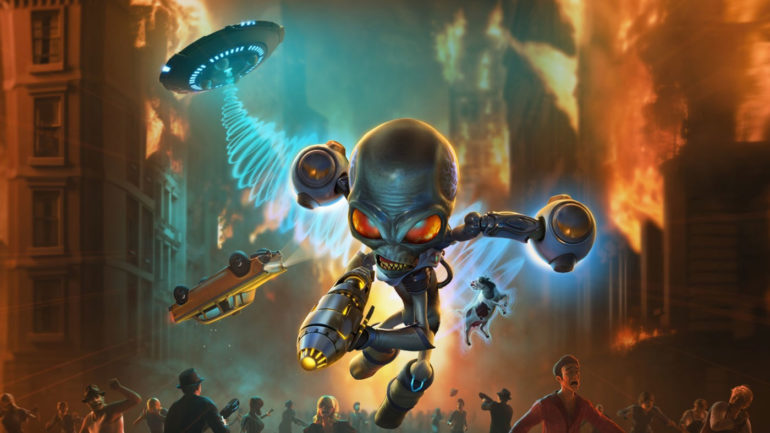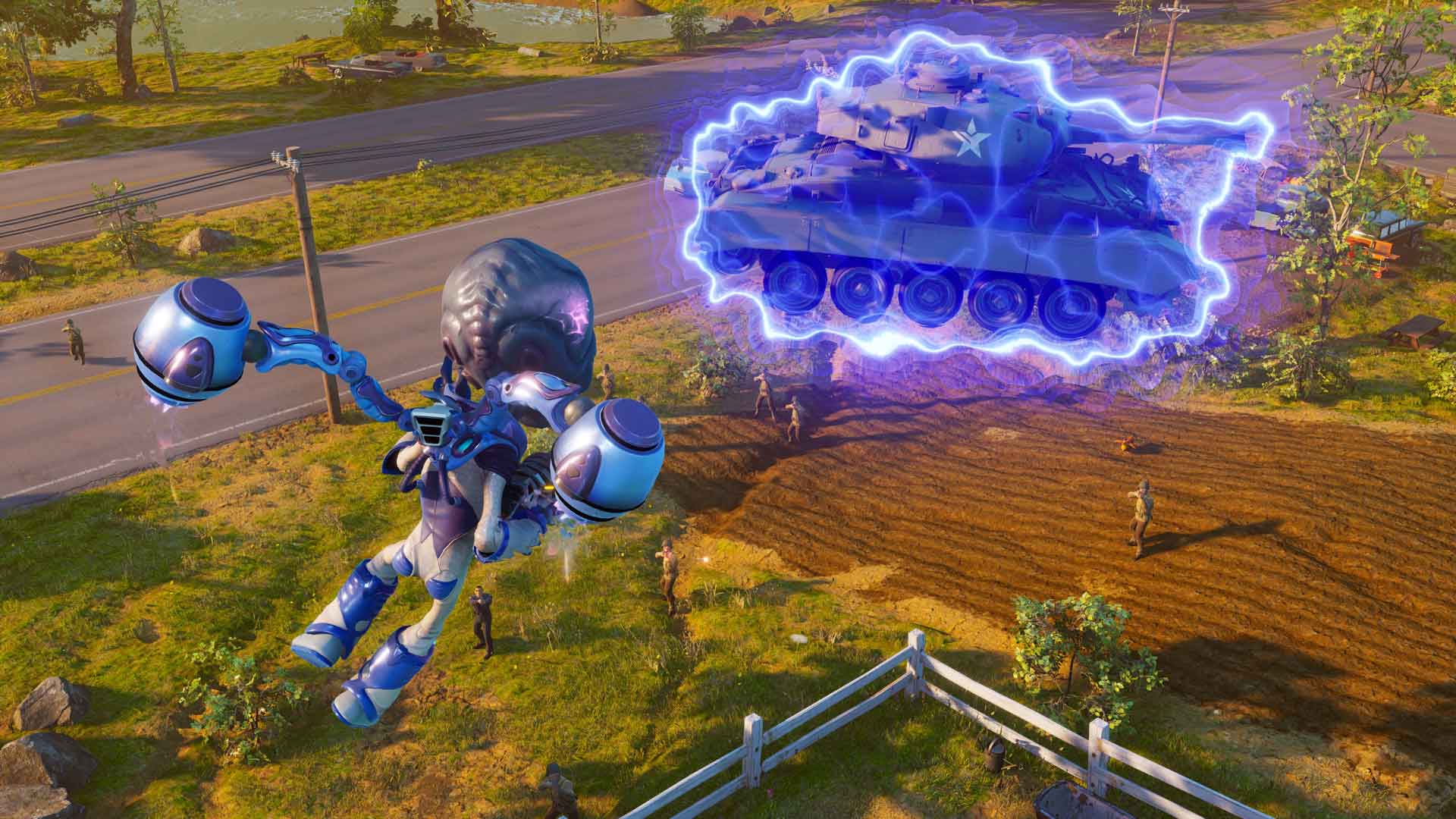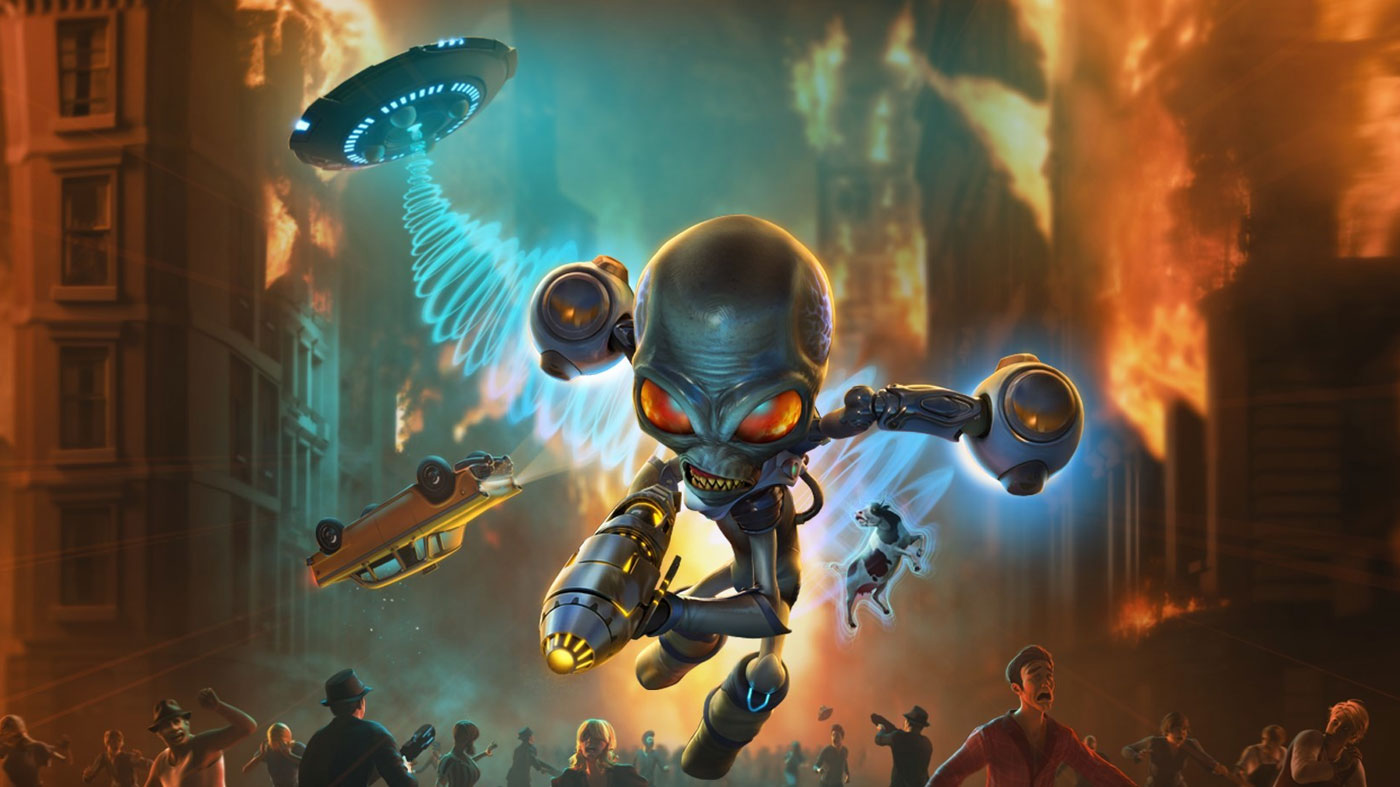Destroy All Humans! takes place in the late fifties and sees alien life-form Crypto-137 investigating planet Earth amidst the disappearance of his predecessor, Crypto-136. It’s a relatively simple story with minimal surprises. Still, it does pay great homage to the invasion thrillers of that period in both tone and atmosphere. All in all, it’s a great – though the use of the same audio as the original game has led to missed opportunities to update the comedy a little bit. That’s not to say it’s questionable in terms of pure content, it just feels notably dated amongst the new coat of paint.
It’s apparent just how much time and effort has gone into recreating Crypto’s debut adventure from the get-go. The game plays almost exactly how you think it played fifteen years ago but returning to the original game only helps to highlight just how extensive this remake is. Virtually every aspect of the game has been overhauled and improved – so much so that it’s nigh impossible to deny that this remake does everything better than it’s predecessor.
The game itself isn’t quite an open world but instead open level – allowing players to complete story-based missions in specific sections of each area or explore the area freely outside of missions. There are six locales for Crypto to wreak havoc through, complete with a tiered wanted-style ranking system and both buildings and people to destroy. Each area is as distinct as the last, while still fitting in with the whole vibe the game is going for.
Back in the day, it was apparent that Crypto was one of the most capable protagonists in an open-world game. The remake only seeks to bolster that reputation. Crypto himself has access to four weapons and telekinetic powers that allow him to lift and fling almost anything around the map. The remake also bestows him with some new abilities and enhancements to his original ones to round out Crypto’s arsenal a little bit more.
It’s not immediately obvious how these new abilities have been balanced into the game, but they don’t entirely ruin the balance as much as you’d imagine. Crypto can now dash around to the point where he’s basically skating to avoid enemy fire, but I never felt this made things any easier. Weapon improvements generally improve damage, capacities, and crowd control options, which, if anything, alleviates a bit of the original’s difficulty.
The controls have also been completely reworked to make flying and movement much more fluid and allow Crypto to do multiple things at once. You can literally pick up a cow, light it on fire, and then throw that cow at something else rather than shuffling through abilities like in the original game. This opens some fun combat situations that simply weren’t possible before, and it feels like a vast improvement on top of the obvious graphical upgrade. Other more noticeable areas for improvement have also significantly been capitalised on, including more fluid movement when Crypto is in the air as well as in his UFO.
A few more efforts have been made to make things a little more interesting, including optional objectives that can be completed to earn more currency to exchange for Crypto’s abilities. These optional objectives sound like a smart way to expand the game without creating new content, but most of them are objectives you’ll complete anyway. Still, it does force you to experiment a little bit with the combat, but it does ultimately feel shallow when all is said and done.
What’s most disappointing is that so much effort has gone into Destroy All Humans! to improve in so many areas, but the most glaring issues with the game still persist. The game’s most significant problem is thankfully towards the end, so it might not affect your enjoyment, but the bosses are exercises in tedium. They have multiple phases but are incredibly slow-paced with checkpointing that feels characteristically old school. With so many improvements made elsewhere, it seems strange that these battles are virtually untouched.
As a whole experience, you can expect to get around ten to twelve hours out of Destroy All Humans!. There’s a new mission, too, restored from the archives of the original developer, though it still feels the same as the rest of them. From beginning to end, you’ll undoubtedly have a good time, but there is no escaping that this was a game designed in 2005. There are lots of tools, and lots of options but barely any situations that require you to use them. When you’re done with missions, you can free roam to find collectibles and complete ranked challenges too, which is a nice touch too.
From a presentation level, Destroy All Humans! stands amongst some of the better visuals overhauls this generation – reviving its world and look to the same levels as some of the better remakes like the Crash Bandicoot and Spyro trilogies. Everything is colourful and vibrant, and on the higher end of consoles, everything runs at a fluid sixty frames too. To my surprise, the cinematics haven’t just been brought over but completely choreographed to better use today’s technology. Everything just feels much more modern to the point where going back to the original feels like a huge downgrade, just as a remake should be.
Things aren’t as clear cut with the soundtrack and voice work, however. The most glaring flaw that could have been fixed with the original game is that the soundtrack is noticeably repetitious. As I began my journey in the game, I was loving the very appropriate, theremin-fuelled soundtrack. But as I progressed further, it was apparent that there were no other tracks, and things got a little bit repetitive. I understand this is a remake, but some new music or even remixes to make things less repetitive wouldn’t have gone astray.
After all, a remake can only really accomplish so much, and given what the team had to work with, Destroy All Humans! is a solid update to a game that’s bound to scratch that nostalgic itch.
THE XBOX ONE VERSION OF DESTROY ALL HUMANS! WAS REVIEWED ON AN XBOX ONE X FOR THE PURPOSE OF THIS REVIEW. A DIGITAL REVIEW CODE WAS PROVIDED BY THE PUBLISHER.









